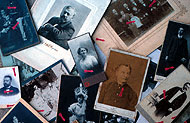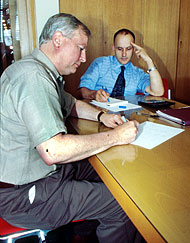 | |
Project Objectives
The research on the conservation of photographs project seeks to advance the identification of photographs and photographic processes beyond optical microscopy—the current standard methodology for identification of photographs. Through the systematic use of instrumental and analytical methods used in art conservation practice, and through newly developed advanced techniques, the project aims to identify major photographic processes and important process variants, and to provide greater insight into processing chemistry and postprocessing treatment of photographs.
The objectives of the project are:
- An in-depth review of scientific and conservation literature related to the identification of photographs and photographic processes;
- Development of scientific methodologies for instrumental and analytical characterization of photographs and photographic material;
- Applied research;
- Preparation of an atlas of analytical signatures of different photographic processes to aid in the identification of photographic materials;
- Creation of a practical, instrument-based decision tree for the identification of photographic processes, their variants, and post processing treatment of photographs and photographic material.
Project Overview
As chemical (classical) photography is increasingly replaced with digital photographic technology, there is a danger that this shift will trigger a decrease in scientific research and knowledge regarding chemical photography. This could result in the loss of crucial information about past artistic, commercial, and experimental photographic processes and technologies.
 | |
In response to these concerns, the GCI and the Image Permanence Institute (IPI) in Rochester, New York, organized a meeting of experts in 2000 to discuss identification of the most important research issues of conservation of photographs and photographic material. The consensus among participants was that there was a need for the development of an advanced methodology to identify photographs and photographic materials as a prerequisite for further development of treatment and preventive treatment of photographic material.
Following the experts meeting in Rochester, the GCI conducted a feasibility study to define the methods, structure, and goals of the project. With the successful completion of the feasibility study the GCI, the IPI, the Centre de recherches sur la conservation des documents graphiques (CRCDG), Paris and the Department of Chemistry at California State University, Northridge (CSUN) launched a large scale collaborative research project.
Since the start of the project a number of other institutions and individual collaborators have joined different segments of the project ranging from the development of analytical methodology to application of project results in solving important problems of art conservation and art historical research related to photographs and photographic collections.
The project team partners are working both independently and collaboratively on several areas of research, and meet regularly to exchange ideas and results.


